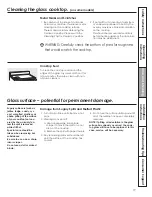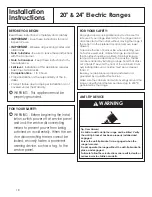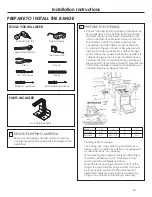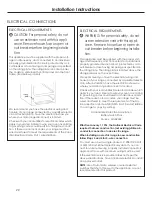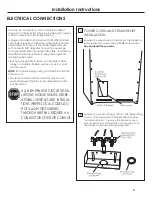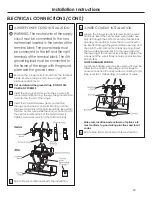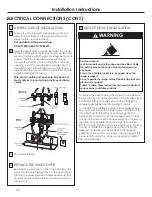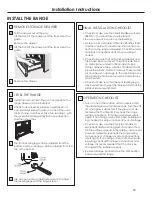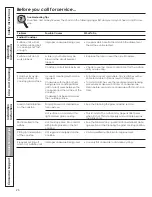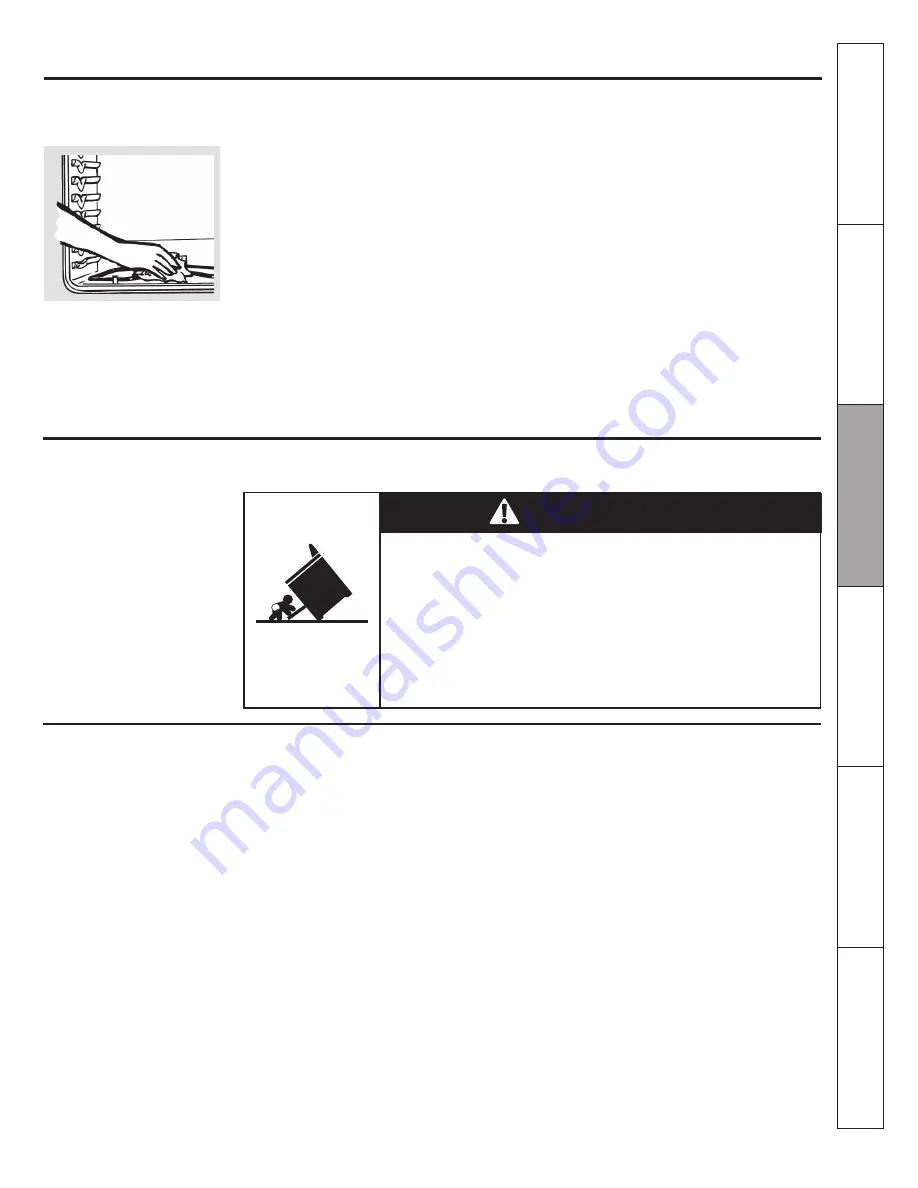
11
Safety Instructions
Operating
In
stru
ctio
ns
Care and Cleaning
Troubleshooting Tips
Consumer Support
Installation
In
stru
ctio
ns
Using the self-cleaning oven.
The oven door must be closed and all controls must be set correctly for the cycle to work prop-
erly.
Before a Clean Cycle
Wipe up heavy soil on the
oven bottom (appearance
may vary).
(on some models)
The oven must be cool in order to set the
self-clean cycle.
We recommend venting your kitchen with
an open window or using a ventilation fan
or hood during the first self-clean cycle.
Remove broiler pan, broiler grid, all cook-
ware and any aluminum foil from the
oven.
The shiny, silver-colored oven shelves (on
some models) can be self-cleaned, but
they will darken, lose their luster and be-
come hard to slide.
Do not use abrasives or oven cleaners.
Clean the top, sides and outside of the
oven door with soap and water.
Make sure the oven light bulb cover (on
some models) is in place and the oven
light is off.
IMPORTANT:
The health of some birds is ex-
tremely sensitive to the fumes given off
during the self-cleaning cycle of any oven.
Move birds to another well ventilated
room.
Care and cleaning of the range.
Be sure electrical power is off and all surfaces are cool before cleaning any part of the range.
Oven Interior
(on standard-clean models)
WARNING
Tip-Over Hazard
A child or adult can tip the range and be killed. Verify the anti-
tip bracket has been properly installed and engaged.
Ensure the anti-tip bracket is re-engaged when the range is
moved.
Do not operate the range without the anti-tip bracket in place
and engaged.
Failure to follow these instructions can result in death or serious
burns to children or adults.
With proper care, the porcelain enamel finish
on the inside of the oven - top, bottom, sides,
back and inside of the door- will stay new-
looking for years.
Let the range cool before cleaning. We rec-
ommend that you wear rubber gloves when
cleaning the range.
Soap and water will normally do the job.
Heavy spattering or spillovers may require
cleaning with a mild abrasive cleaner. Soap-
filled scouring pads may also be used.
IMPORTANT:
Do not allow food spills with a
high sugar or acid content (such as milk, to-
matoes, sauerkraut, fruit juices or pie filling)
to remain on the surface. They may cause a
dull spot even after cleaning.
Household ammonia may make the clean-
ing job easier. Place 1/2 cup in a shallow
glass or pottery container in a cold oven
overnight. The ammonia fumes will help
loosen the burned-on grease and food.
If necessary, you may use an oven cleaner.
Follow the package directions.
Do not spray oven cleaner on the electrical
controls and switches because it could
cause a short circuit and result in sparking or
fire.
Do not allow a film from the cleaner to build
up on the temperature sensor- it could cause
the oven to heat improperly. (The sensor is lo-
cated at the top of the oven.) Carefully wipe
the sensor clean after each oven cleaning,
being careful not to move the sensor as a
change in its position could affect how the
oven bakes.
Do not spray any oven cleaner on the oven
door, handles or any exterior surface of the
oven, cabinets or painted surfaces. The
cleaner can damage these surfaces.

















